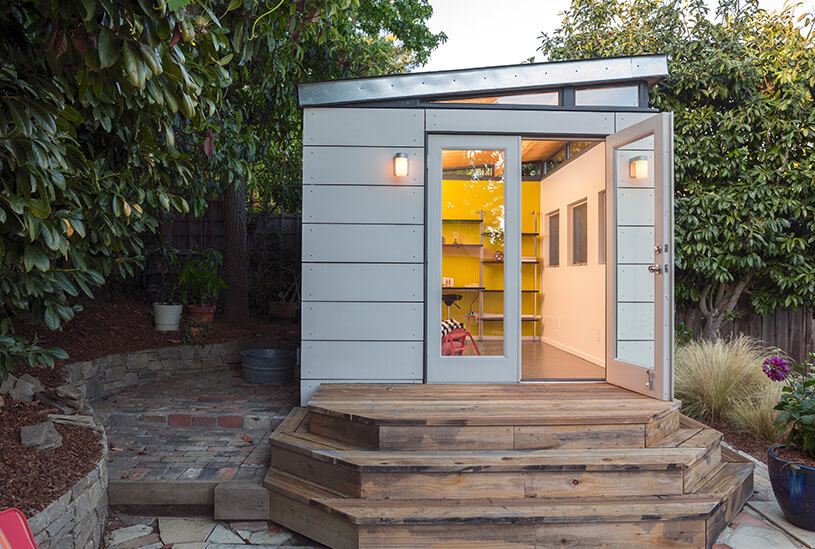Extending a buy-to-let property can increase its value and allow landlords to earn a higher rental income.
But how can you extend your property without planning permission? Read our permitted development guide to find out how it works and the type of renovation you could do.
What is permitted development?
Permitted development is a law that allows homeowners to make certain improvements to their properties without having to get planning permission from their local authority.
Extending or improving a property using your permitted development rights can be quicker and less complicated than getting planning permission.
Permitted development can be used for a range of home improvements such as loft extensions or garage conversions.
It gives landlords the opportunity to add value to their existing rentals or buy new properties with the aim of extending or improving it quickly.
A renovated property could attract a higher monthly rent, improving your rental yield. It could also increase its future sale value, allowing you to achieve a higher return on investment.
However, it’s important to note that these rights come with a set criteria. Any projects that don’t meet the criteria would need planning permission from a local authority.
What is allowed under permitted development rules?
The government has permitted development guidance that covers different types of property and a range of renovation works.
Below are some of the most common permitted development examples and an overview of the criteria you need to meet if you want to complete this work without planning permission.
Loft conversions
Converting a loft to add an extra bedroom is one of the most popular developments with landlords and homeowners.
Most loft conversions will be covered by permitted development rights, however you need to make sure that:
- the extension isn’t higher than the existing roof
- the materials used are similar in appearance to the property
- the conversion doesn’t have a balcony, veranda, or platform
- you don’t already have additional storeys that were added under permitted development
Read our landlord’s guide to loft conversions for more information.
Single storey extensions
Most single storey extensions, such as a larger kitchen, conservatory, or extra bedroom, can be completed under permitted development rights.
Here are the main criteria you need to meet if you want to build a single storey extension without planning permission:
- the extension can’t exceed 50 per cent of the land surrounding the existing property
- if it’s on the side of the property, the maximum height allowed is three metres
- the eaves of extensions that are within two metres of a plot boundary must be no higher than three metres
- extensions at the back of semi-detached and terraced properties can protrude no more than three metres (four metres for detached properties)
- the extension must reflect the existing materials of the property
It’s important to note that extensions on the front or side of a property facing a public road don’t fall under permitted development and will need planning permission.
Two storey extensions
A two storey extension is likely to be an expensive and time-consuming project. However, it could significantly improve a property’s rental value by adding an extra bedroom and larger kitchen or living space.
Here are the rules for two storey permitted development extension:
- the extension width must be less than 50 per cent of the width of the existing property
- it can’t exceed the height of the existing property eaves
The same rules apply as single storey extensions when it comes to:
- how far they can protrude (three metres for terraced and semi-detached properties and four metres for detached properties)
- reflecting the existing materials of the property
- not being built within two metres of a plot boundary
Converting an outbuilding
Rather than being wasted space, an outbuilding could be converted into something useful for your tenants.
There are lots of opportunities for converting an outbuilding, from a summer house or home gym to office space or studio.
If you go down this route, here’s the criteria you need to meet if you don’t want to apply for planning permission:
- if an outbuilding is within two metres of a plot boundary, the conversion can’t be higher than 2.5 metres
- the outbuilding can’t use more than 50 per cent of the land surrounding the property
- you can’t convert an outbuilding that’s located at the front of the property
- if the outbuilding has a dual-pitched roof, it can’t be higher than four metres. Otherwise, the eaves can’t exceed 2.5 metres

coralimages/stock.adobe.com
Garage conversions
Converting a garage to add a bedroom, living space, or home office can increase a property’s rental value.
Most garage conversions will be covered by permitted development rights and the criteria to meet isn’t as strict.
These are the three main things you’ll need to consider:
- The conversion can’t increase the size of the original building
- It must reflect the existing materials of the property
- All work to the garage must be internal
What is excluded from permitted development?
Depending on your property type, you may not be able to use permitted development rights when renovating a property.
The main exemptions are:
- listed properties
- properties in conservation areas
- flats and maisonettes
Permitted development criteria – what do landlords need to know?
Before starting any conversions or extensions, you need to make sure that your plans meet the criteria for permitted development rights.
If they don’t, you’ll need to apply for planning permission from your local authority. You’ll have to pay an application fee and it’s likely to take a few weeks.
What is the permitted development technical guidance?
The government’s technical guidance for permitted development is a detailed guide covering what you can and can’t do as a homeowner.
However it’s 50 pages long and it’s a technical document, so you may need the help of a professional if your renovation plans are more complex.
Useful guides for buy-to-let landlords
- How often should landlords redecorate a rental property?
- How can landlords get a buy-to-let remortgage?
- What is the minimum bedroom size for HMO properties in the UK?
- Energy efficiency guide for landlords – what is an EPC rating?
Get set with tailored landlord cover
Over 200,000 UK landlord policies, a 9/10 customer rating and claims handled by an award-winning team. Looking to switch or start a new policy? Run a quick landlord insurance quote today.
